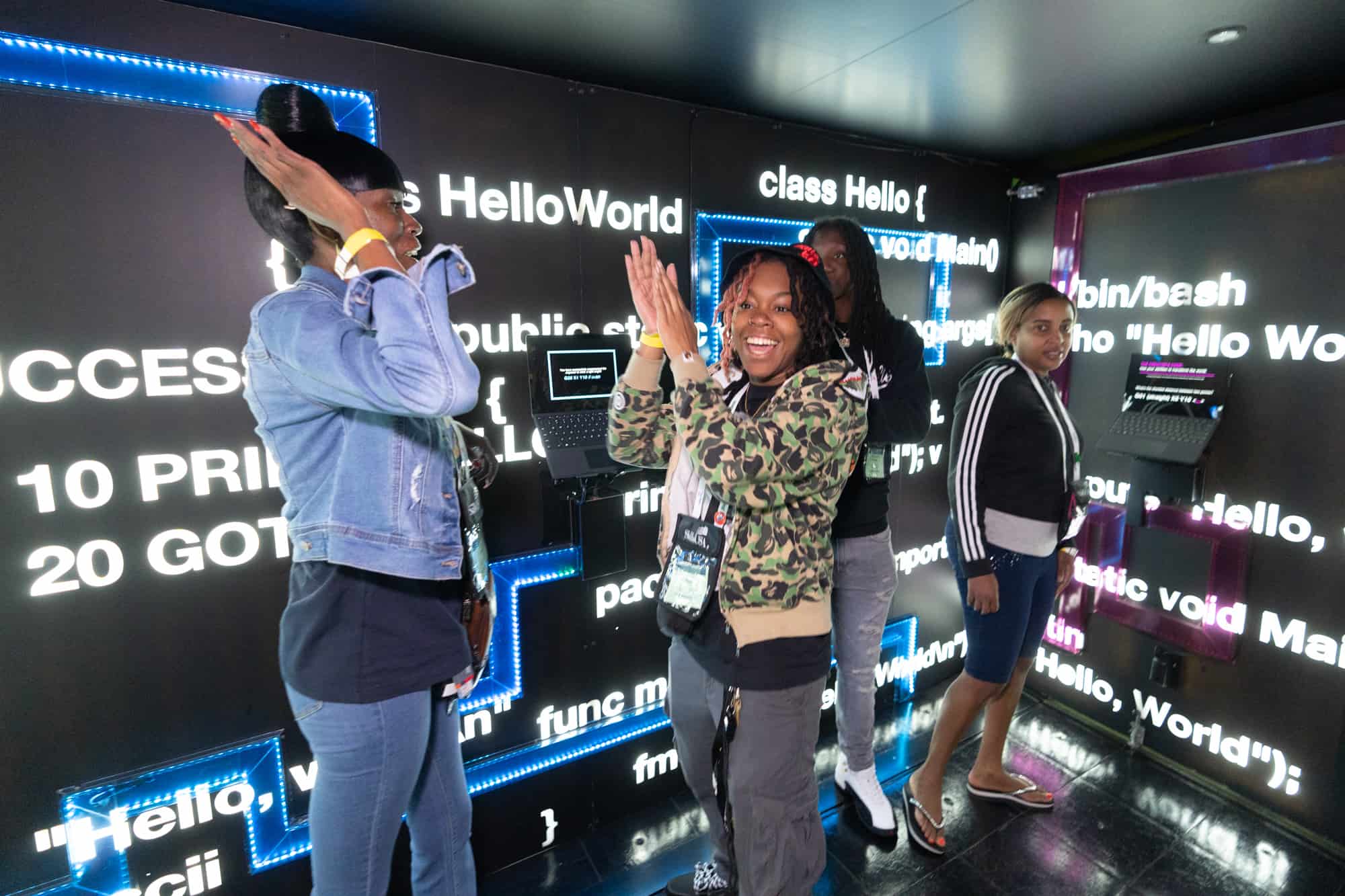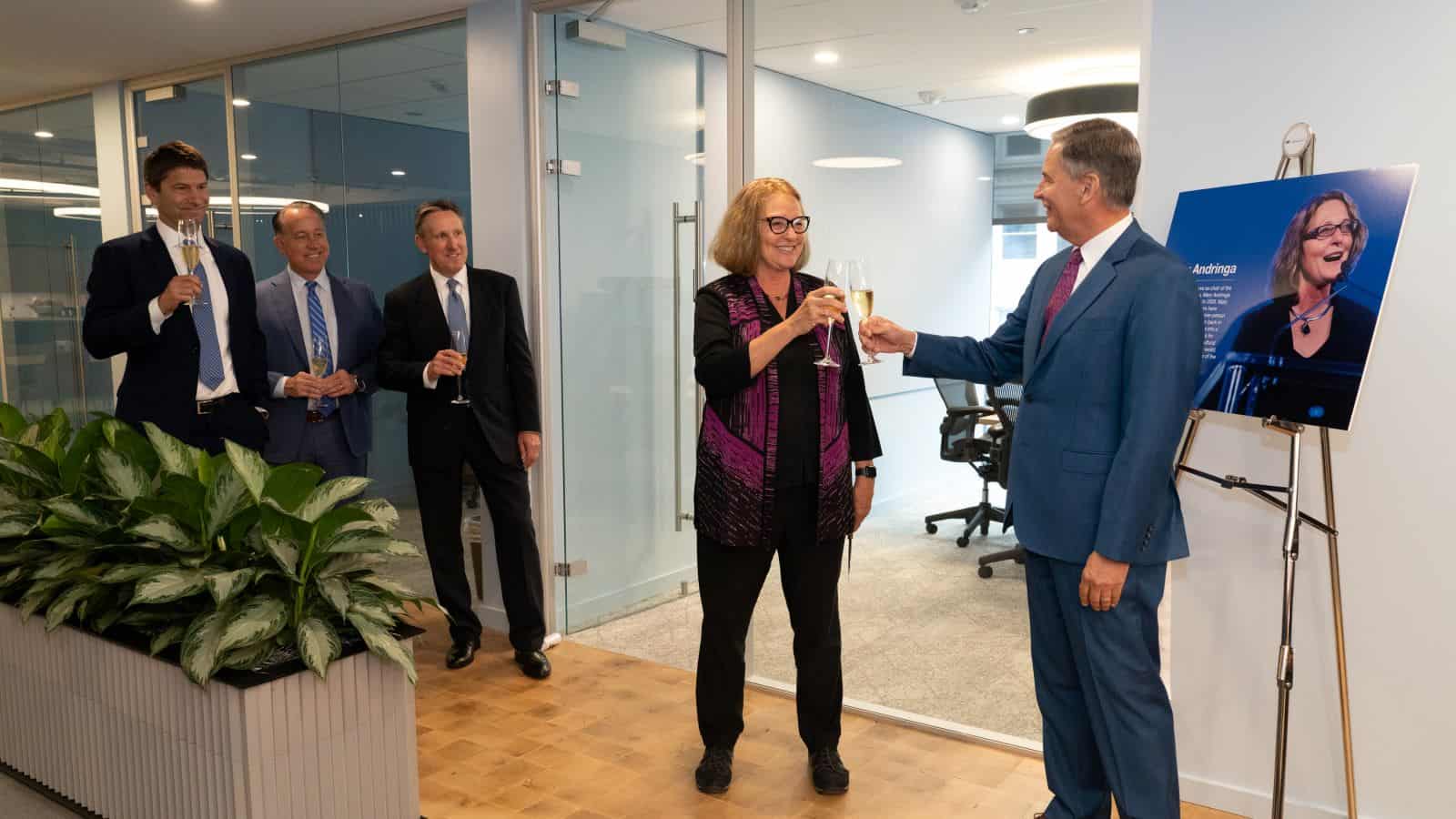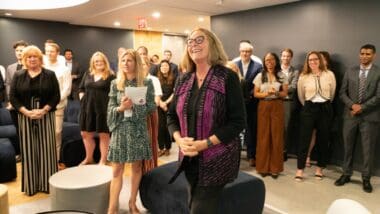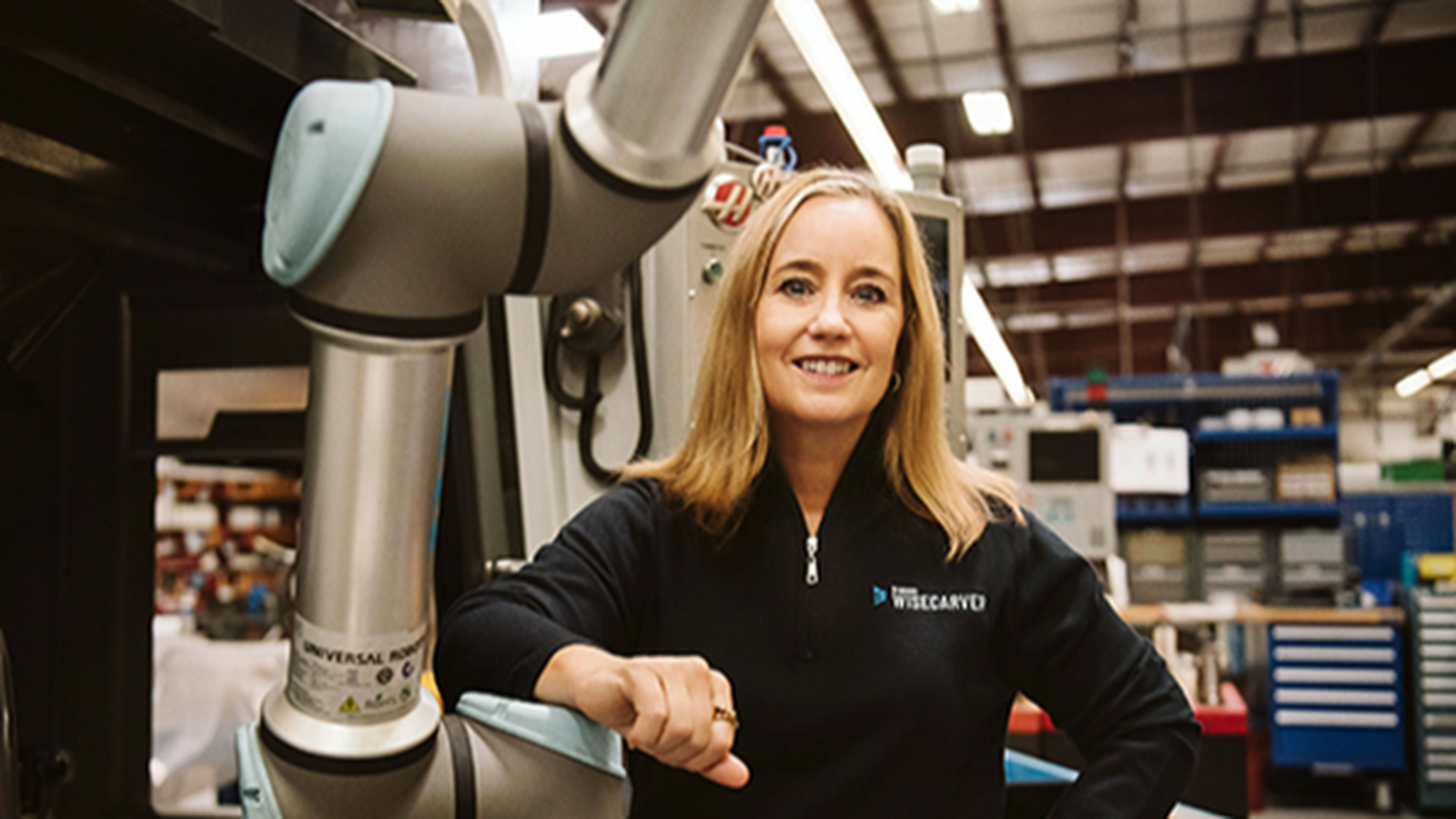Anheuser-Busch Supports Partners, Workers

Anheuser-Busch has a solid history of supporting its U.S. facilities and partners, and now it’s expanding those efforts.
What’s going on: The beer giant will give financial and other assistance to its wholesalers, distributors and frontline workers, it announced in a memo and regulatory filing with the Securities and Exchange Commission this month.
- Aid to partners and workers will include wholesaler financial support and sales incentive payments, reimbursements for freight and fuel surcharges and extended lines of credit though the end of the year, as well as financial assistance for local marketing efforts.
“Beer is for everyone”: The financial announcements came just days before the release of Bud Light’s “Easy to Drink, Easy to Enjoy” campaign.
- Other components of the campaign are weekly $10,000 giveaways, Fourth of July weekend rebates and chances to win tickets to local shows in the national Bud Light Backyard Tour, which will feature country music artists Seaforth and Tyler Braden.
Origin story: Today Anheuser-Busch launches its “That’s Who We Are” effort to show where the company’s beers come from and who’s involved in making them. More than 140 growers, employees, wholesalers and other partners participated in the filming of the campaign’s first ad.
The last word: “As we move forward, we will focus on what we do best—brewing great beer and earning our place in moments that matter to you,” Anheuser-Busch CEO Brendan Whitworth said in the memo. “We are a beer company, and beer is for everyone.”
Manufacturers Make Progress on DE&I

Diversity, equity and inclusion efforts have a lot of payoffs: they widen talent pipelines, increase retention rates and improve business outcomes. So what are manufacturers doing to strengthen DE&I in their workplaces? A newly updated survey from the MI and Keybridge has the answers.
What it is: The MI and Keybridge conducted their inaugural DE&I benchmarking survey in October 2021, and manufacturers’ DE&I efforts have grown a lot since then. One year later, the MI and Keybridge repeated the survey, and the results are in—along with recommendations for manufacturers seeking to grow further.
A firm commitment: 72% of manufacturers agreed that improving and maintaining DE&I was a key focus for their company in 2022—and many of them have been taking tangible steps toward that goal.
- Of the 60% of companies that made public statements affirming their commitment to DE&I, most have followed through with diversity commitments, employee resource groups, donations and transparent updates on their DE&I progress.
Widening talent pools: More than 60% of respondents reported that the representation of women within their companies has increased in the past five years. Still, there were also some challenges in expanding the diversity of hiring pools.
- 50% of companies reported struggling with hiring diverse candidates, with 40% struggling with retaining diverse workers.
Where to start: Companies that have not yet taken concrete actions toward fulfilling their commitments can get started by developing a strategic plan or designating a senior leadership position for DE&I issues, the report recommended.
- Another useful tactic is setting up feedback mechanisms for employees, so the company can track its progress on DE&I.
More recommendations: For those further along, the report suggests other moves, including:
- Expand recruitment pipelines by partnering with community organizations, community colleges and technical schools to tap into more diverse pipelines.
- Update position descriptions with language that widens and diversifies the applicant pool.
- Review hiring practices to minimize bias, such as by including blinded resume reviews, standardizing interview questions and employing skills tests and panel interviews.
- Standardize the promotion processes by using the same scoring system and criteria for all employees, seeking input from multiple sources and highlighting clear career pathways.
- Standardize work assignment systems by cross-training workers, to ensure that no one employee is stuck in an undesirable role for too long.
The last word: “The labor market is historically tight, and we know the number one issue for manufacturers is workforce,” said NAM Chief Economist and Manufacturing Institute Center for Manufacturing Research Director Chad Moutray. “Focusing on DE&I is a great way to widen the net and retain the employees that you have.”
Creators Wanted Makes an Impact at SkillsUSA

The Creators Wanted tour landed in Atlanta last week for the SkillsUSA National Leadership and Skills Conference—the largest gathering of the America’s future skills workforce.
Over the course of the three-day program, the tour, an initiative of the NAM and the Manufacturing Institute, helped change attitudes and challenge misconceptions about manufacturing, opening up a new world for some of the country’s most talented rising workers.
By the numbers: The tour’s SkillsUSA stop, sponsored by Honda, Snap-on, FactoryFix and Union Pacific, helped share the story of modern manufacturing with many of the brightest career mentors and technical education students in the United States.
- 15,000 people attended the event, including many career and technical education students, educators and parents.
- More than 1,500 people took part in the Creators Wanted immersive experience at SkillsUSA.
- More than 120,000 students and career mentors signed up to learn more about modern manufacturing careers during the tour stop in Georgia.
More participants: Other leading manufacturers were also in attendance, engaging students with information about careers in manufacturing. A few of the participants included Caterpillar, John Deere/Korematsu, Volvo NA Group, Vermeer Corp., Toyota, Cummins, Penske and 3M.
A special guest: Snap-on Chairman and CEO Nick Pinchuk dedicated a full day to inspiring students and educators. The NAM executive committee member and Manufacturing Institute board member emphasized the “Creators Wanted” mantra in order to remind participants that manufacturers aren’t just recruiting workers—they’re inspiring and empowering creators.
Local coverage: The visit made waves in Georgia, where it was covered on Fox 5’s Good Day Atlanta:
- “A huge turnout down here,” said Fox 5’s Paul Milliken, who had multiple live hits at the Creators Wanted immersive experience. “These students are so talented, so incredible … the future of America’s skilled workforce.”
- “This conference—it’s just a really incredible opportunity for these future workforce leaders to come together, meet each other, network and compete.”
WATCH: @GoodDayAtlanta's @PaulFromFox5 reports on #CreatorsWanted traveling to @GWCC_ATL for @SkillsUSA #NLSC23. Check out how we are working to inspire students to consider rewarding careers in modern manufacturing. https://t.co/0GAlhxDmTb pic.twitter.com/BFJeKyXS9G
— The NAM (@ShopFloorNAM) June 20, 2023
Overheard at the event: Plenty of participants shared their excitement, emphasizing opportunities to connect with employers, learn about new skills and find paths to future careers.
- “These are viable careers. They are jobs that you can make quite a bit of money right from the beginning, and at the same time you’re learning core skills that you can carry on for the rest of your life.”
- “We’ve got tons of jobs out there across the U.S. Everybody is looking for talented individuals.”
- “You can explore … different careers that you want to do, [to] help you become a more successful adult in the future.”
The big picture: Over the course of the Creators Wanted Tour, which launched a year and eight months ago:
- 4 million students and career mentors have signed up online to learn more about modern manufacturing careers.
- Over 10,000 students and more than 3,000 career mentors have participated in our immersive experience, with 84% reporting a significantly improved view of modern manufacturing careers.
- The tour has received $5.35 million in positive earned media and 150 million digital impressions.
Making an impact: “Interacting with the students, educators and caregivers, we could truly feel the impact we’re making,” said Chrys Kefalas, managing vice president of brand strategy at the NAM. “This isn’t just about changing minds—we’re creating dreams and altering life trajectories.”
What’s next: The tour keeps on rolling this fall to Minneapolis and St. Paul, Minnesota, and Circleville, Ohio. You can also keep an eye out for new online resources that are coming out this summer, or browse the more than 330,000 open manufacturing jobs and 150,000 training programs listed online.
Creators Wanted Makes an Impact at SkillsUSA

The Creators Wanted tour landed in Atlanta last week for the SkillsUSA National Leadership and Skills Conference—the largest gathering of the America’s future skills workforce.
Over the course of the three-day program, the tour, an initiative of the NAM and the Manufacturing Institute, helped change attitudes and challenge misconceptions about manufacturing, opening up a new world for some of the country’s most talented rising workers.
By the numbers: The tour’s SkillsUSA stop, sponsored by Honda, Snap-on, FactoryFix and Union Pacific, helped share the story of modern manufacturing with many of the brightest career mentors and technical education students in the United States.
- 15,000 people attended the event, including many career and technical education students, educators and parents.
- More than 1,500 people took part in the Creators Wanted immersive experience at SkillsUSA.
- More than 120,000 students and career mentors signed up to learn more about modern manufacturing careers during the tour stop in Georgia.
More participants: Other leading manufacturers were also in attendance, engaging students with information about careers in manufacturing. A few of the participants included Caterpillar, John Deere/Korematsu, Volvo NA Group, Vermeer Corp., Toyota, Cummins, Penske and 3M.
A special guest: Snap-on Chairman and CEO Nick Pinchuk dedicated a full day to inspiring students and educators. The NAM executive committee member and Manufacturing Institute board member emphasized the “Creators Wanted” mantra in order to remind participants that manufacturers aren’t just recruiting workers—they’re inspiring and empowering creators.
Read the full story here.
Manufacturers Make Progress on DE&I

Diversity, equity and inclusion efforts have a lot of payoffs: they widen talent pipelines, increase retention rates and improve business outcomes. So what are manufacturers doing to strengthen DE&I in their workplaces? A newly updated survey from the MI and Keybridge has the answers.
What it is: The MI and Keybridge conducted their inaugural DE&I benchmarking survey in October 2021, and manufacturers’ DE&I efforts have grown a lot since then. One year later, the MI and Keybridge repeated the survey, and the results are in—along with recommendations for manufacturers seeking to grow further.
A firm commitment: 72% of manufacturers agreed that improving and maintaining DE&I was a key focus for their company—and many of them have been taking tangible steps toward that goal.
- Of the 60% of companies that made public statements affirming their commitment to DE&I, most have followed through with diversity commitments, employee resource groups, donations and transparent updates on their DE&I progress.
Widening talent pools: More than 60% of respondents reported that the representation of women within their companies has increased in the past five years. Still, there were also some challenges in expanding the diversity of hiring pools.
- 50% of companies reported struggling with hiring diverse candidates, with 40% struggling with retaining diverse workers.
Where to start: Companies that have not yet taken concrete actions toward fulfilling their commitments can get started by developing a strategic plan or designating a senior leadership position for DE&I issues, the report recommended.
Read the full story here.
NAM Honors Vermeer’s Mary Andringa

When Mary Andringa arrived at NAM headquarters on Wednesday, she expected a tour of the renovated office. Instead, the former NAM Board chair was surprised by an applauding crowd who gathered for the ribbon-cutting for one of the NAM’s meeting rooms, now named the Mary Andringa Room in commemoration of her decades-long service to manufacturers in the U.S. The NAM’s conference rooms are named for many luminaries of manufacturing, including Andrew Carnegie, Thomas Edison, the Wright Brothers, Jonas Salk and Marie Curie.
“I was absolutely overwhelmed, humbled and honored,” Andringa said.
A longtime supporter: Now chair emeritus of Vermeer Corporation—a family-owned, midsized manufacturer of industrial and agricultural machines in Pella, Iowa—Andringa served as NAM Board chair from 2011 to 2013 and has been an active participant on the NAM Board since the early 2000s.
- Andringa found her experience as NAM Board chair deeply meaningful, remarking on the close relationship she developed with NAM President and CEO Jay Timmons, who was also newly appointed in 2011.
- “It was a really great experience because I had a few years under my belt as CEO [of Vermeer],” Andringa said, “and I could share best practices with Jay. It was great to see how he took initiative and dug into some areas that needed more cooperation, like the NAM’s partnerships with state associations.”
Visiting the Hill: Andringa said she “enjoyed being a voice for manufacturing” in meetings on the Hill and with several administrations.
- Whether advocating against compliance regulations that created needless hardship for manufacturers, or for removing trade barriers impeding U.S. exports, Andringa stressed that she always made her case to policymakers on both sides of the aisle.
- “The NAM tries to be the voice of reason. … It has done a good job connecting with both parties and whoever is in the White House,” she said.
- She always felt that policymakers listened to her and took her opinions seriously, recognizing that her privately held, medium-sized company was “what America is all about.”
Workforce, workforce, workforce: The importance of training more skilled workers has remained constant throughout Andringa’s career as a manufacturer and advocate for manufacturing.
- One of the highlights of her time at the NAM, she said, was seeing the rise of the Manufacturing Institute, the NAM’s 501(c)3 workforce development and education affiliate, on whose board she now serves.
- Andringa is impressed particularly with the MI’s stellar outreach, which includes webinars that help manufacturers recruit workers from populations they might not be familiar with, such as people with criminal records.
Her story: Andringa understands the importance of workforce education and training firsthand, having worked as a teacher before joining her family’s company back in 1982.
- After starting out at Vermeer in human resources, then moving to the advertising department, she became deeply involved in manufacturing operations.
- Looking back at her years as COO, then co-CEO with her brother and finally solo CEO, she is proudest of two accomplishments: championing lean manufacturing, which the company has now practiced for 25 years, and working with her family members to create a solid governance structure to avoid the difficult leadership transitions family firms often face.
- And to take things full circle, Andringa also exercised her commitment to education at Vermeer, ensuring that its team members have many opportunities for training and advancement.
Lasting ties: Andringa has many fond memories of her work with the NAM, including the time in 2008 where she and other NAM representatives unexpectedly found themselves talking with President George W. Bush.
- She recalls that Timmons encouraged her to talk to the press afterward, which taught her an important lesson: that you must always come prepared with a short pitch that will get your story across quickly, because storytelling is all-important.
The last word: When asked which accomplishment at the NAM she is most proud of, Andringa responds “encouraging and supporting the NAM team … which is very intentional and very dedicated to manufacturers.”
Mining Needs More Workers

As demand for raw materials escalates, mining companies in the U.S. are struggling to find enough workers to keep up, reports The Wall Street Journal (subscription).
What’s happening: The U.S. is advancing its green-energy transition while also developing new domestic sources of minerals to decrease reliance on China.
Workforce shortage: “The overall industry’s seasonally adjusted head count shrank by nearly 39% since 1990 … according to the Bureau of Labor Statistics.”
- While colleges and universities—not to mention companies themselves—are working to fill the gap, they are not turning out new workers fast enough.
- “‘The problem is that talent isn’t lying around waiting to be paid more—there just isn’t enough of it,’ said Andrea Brickey, an associate professor of mining engineering and management at the South Dakota School of Mines & Technology.”
Get help: If you are searching for ways to attract or upskill workers, the Manufacturing Institute (the NAM’s 501(c)3 workforce development and education affiliate) has you covered. It can also help you start preparing now for manufacturing’s biggest opportunity to reach young people and prospective workers: MFG Day.
“Listen and Act”: Bishop-Wisecarver Shares Retention Secrets

Keeping her employees happy and engaged is something Pamela Kan, president and owner of Bishop-Wisecarver, takes seriously.
And for good reason. Workforce retention is a pain point for many manufacturers and consistently cited, along with recruitment, as a top business challenge in the NAM’s Manufacturers’ Outlook Survey.
For Kan, meeting this challenge starts with getting her employees’ input—what’s on their minds, their career aspirations and the ways they think the company can improve. Then she acts on it.
Garnering feedback: To assess engagement, Bishop-Wisecarver surveys its employees and calculates an employee net promotor score, which is an internal measurement of employee satisfaction. Kan, the executive director of culture and people and department heads then discuss the areas that need improvement.
- “We share with employees where we have friction points or where things need to change,” Kan said. “We make that very visible. We then start checking these things off the list.”
The company also offers employees many different opportunities to share what’s on their minds, through informal check-ins, team huddles, employee lunches and skip-level meetings.
- “Every single one of these times we are asking for feedback,” Kan emphasized. “We document it and follow up on it, because whenever you ask for feedback and you don’t then respond with changes or next-level discussions, you break the trust with your employees that you care about them.”
- “I reach out to new employees at the 60-day mark to see how it’s going,” she continued. “One actually reached out and said, ‘yeah, we need to talk.’ It was all positive. Some things he didn’t quite understand, being new [to the company], and it showed me some gaps in our onboarding process.”
Conducting reviews: Instead of formal reviews, Kan says Bishop-Wisecarver has instituted quarterly check-ins, with the conversations often centering around career advancement.
- “We’ve tried to create a career ladder that’s not just vertical, but allows for offramps where employees can explore different channels of the company,” said Kan.
- “If somebody starts as an application engineer, that doesn’t mean they have to stay in engineering. They might want to go and try a position in sales, project management or marketing. We leave the door open.”
Other strategies: Kan has also implemented several other workplace practices to keep employees engaged.
- Recognizing employees: Through a program called “Bishop-Wisecarver Bucks,” employees receive a bank of bucks once a month that they can use to recognize others who have lived up to one of the company’s core values: preserve the family culture, deliver a signature experience, embrace a pioneering spirit and the need for speed. The company has an online portal where those receiving the bucks can purchase company merchandise, gift cards or tickets to events.
- Inspiring the next generation: Based on feedback from her employees, Bishop-Wisecarver partners with multiple nonprofits that support students in their local community. One of these is FIRST Robotics, which inspires young people to be science and technology leaders and innovators, as well as well-rounded contributors to society, by engaging them in mentor-based research and robotics programs.
- Reimagining the workspace: After polling her employees, Kan redesigned an entire building to reflect the workstyles and needs of her team. For example, the second floor of the building is now a large training space, where tables, chairs and white boards have wheels for easy configuration for company-wide meetings to multiple small groups. To break down the silos of separate lunchrooms, she created Wisecarver Way Café, complete with a pool table and ping-pong table. The company also has a space for employees to do yoga, allows them to bring their dogs to work and offers gym memberships.
- Offering support: Bishop-Wisecarver also has a program called Life Guides, which connects employees undergoing hardships with peer mentors who have been through similar difficulties, such as caring for an elderly parent or coping with a death in the family.
The last word: “Don’t ask your team for feedback and then do nothing with it,” Kan reinforced. “That’s what creates disengaged team members. Sometimes we don’t get it right, but at least we’ve tried.”
The Manufacturing Institute has many initiatives to help employers retain and develop their teams. For a deeper dive, check out this study by the MI on improving retention and employee engagement. The MI will also explore retention challenges and solutions at its Workforce Summit in Atlanta on Oct. 16–18. Click here for more information.
High School Grads Are Choosing Work Over College

As job growth has risen in industries that don’t require college degrees, high school graduates are increasingly going directly into the workforce, according to The Wall Street Journal (subscription).
The big number: “The college enrollment rate for recent U.S. high school graduates, ages 16 to 24, has declined to 62% last year from 66.2% in 2019.”
- At the same time, the unemployment rate for teenage workers fell to a 70-year low of 9.2% last month.
What’s happening: High school graduates are turning toward jobs that offer competitive wages, particularly in industries like manufacturing, without requiring a pricy degree beforehand.
- For example, machinists earn $23.32 an hour, above the national median wage of $22.26 an hour.
- “If you can get [a job] without a B.A. and with decent wage growth, why go get a B.A.?” as ZipRecruiter Chief Economist Julia Pollak put it.
Demand for training: Meanwhile, more young people are pursuing other forms of job training.
- “The number of apprentices has increased by more than 50%.”
- The changing economy has led to wider acceptance of forgoing college, as employers’ interest in hiring high school graduates has grown, according to Steve Boden, a supervisor at Maryland’s Montgomery County Public Schools.
What we’re doing: The Manufacturing Institute, the NAM’s 501(c)3 workforce development and education affiliate, has been training students so they can enter rewarding career paths that do not require degrees.
- FAME, founded by Toyota in 2010 and currently operated by the MI, is a work/study career pathway program that provides education, training and certifications for the Advanced Manufacturing Technician occupational track.
- If you are interested in understanding the FAME model of skills or what it takes to join or start a chapter, sign up for an informational session here.
“Listen and Act”: Bishop-Wisecarver Shares Retention Secrets

Keeping her employees happy and engaged is something Pamela Kan, president and owner of Bishop-Wisecarver, takes seriously.
And for good reason. Workforce retention is a pain point for many manufacturers and consistently cited, along with recruitment, as a top business challenge in the NAM’s Manufacturers’ Outlook Survey.
For Kan, meeting this challenge starts with getting her employees’ input—what’s on their minds, their career aspirations and the ways they think the company can improve. Then she acts on it.
Garnering feedback: To assess engagement, Bishop-Wisecarver surveys its employees and calculates an employee net promotor score, which is an internal measurement of employee satisfaction. Kan, the executive director of culture and people and department heads then discuss the areas that need improvement.
- “We share with employees where we have friction points or where things need to change,” Kan said. “We make that very visible. We then start checking these things off the list.”The company also offers employees many different opportunities to share what’s on their minds, through informal check-ins, team huddles, employee lunches and skip-level meetings.
- “Every single one of these times we are asking for feedback,” Kan emphasized. “We document it and follow up on it, because whenever you ask for feedback and you don’t then respond with changes or next-level discussions, you break the trust with your employees that you care about them.”
- “I reach out to new employees at the 60-day mark to see how it’s going,” she continued. “One actually reached out and said, ‘yeah, we need to talk.’ It was all positive. Some things he didn’t quite understand, being new [to the company], and it showed me some gaps in our onboarding process.”
Read the full story here.